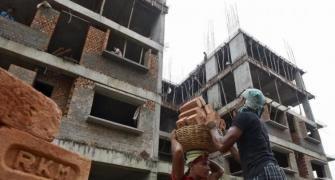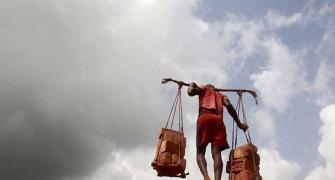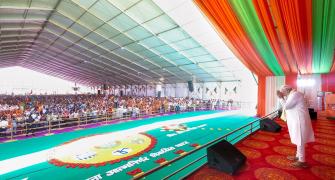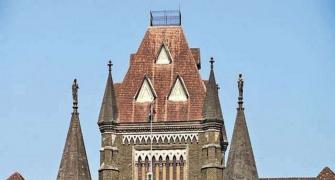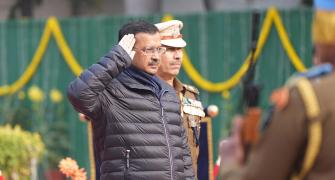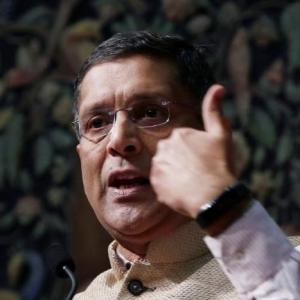In the face of new growth figures, industrialists affirm their belief that the adverse effects of demonetisation and the goods and services tax are finally over.
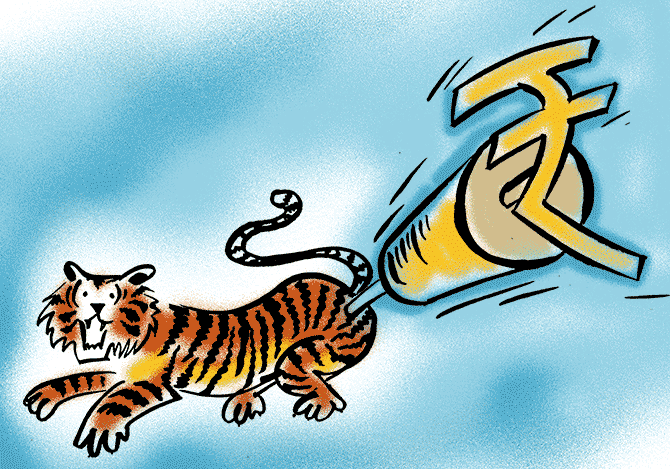
What may have otherwise been dismissed as a mundane meeting turned out to be a setting for hope when around 60 India Inc leaders gathered at a premium hotel in the capital on Saturday.
As part of the national council of the Confederation of Indian Industry, these top businessmen had in the last quarter meeting discussed the perils of a sluggish economy.
Three months later, the business chamber’s closed-door council meeting signalled a turnaround in mood, with the 8.2 per cent GDP growth number fresh in everyone’s mind.
A senior CII functionary who was present at the meet told Business Standard that industrialists had affirmed their belief that the adverse effects of demonetisation and the goods and services tax were finally over. He did not want to be quoted.
According to a source, CII President Rakesh Bharti Mittal expressed hope that a sustained period of industrial growth lay ahead. Mittal is, however, learnt to have stressed that kickstarting the domestic investment cycle was still a work in progress.
The optimism was cautious, though, for many.
Rashesh Shah, president of the rival business chamber Federation of Indian Chambers of Commerce and Industry, said, “While the latest growth numbers are quite robust, the volatility in oil prices and rupee value is exerting some pressure on industry members. These two factors have emerged as the key macro-economic concerns on the horizon.’’
According to Shah, these factors can weigh heavy on the growth performance besides having clear implications on the current account and fiscal deficit.
To Anand Mahindra, chairman of automobile major M&M, the robust GDP growth number for the first quarter of FY19 was like receiving the news of a medal in the Asian Games.
“We’ve been sensing a strong recovery of the economy across our various businesses. This data supports that hypothesis. Now, to sustain momentum we need more reforms and swift decision making by policy-makers,” he said.
This is a manufacturing sector-driven growth, according to R C Bhargava, chairman of India’s biggest carmaker Maruti Suzuki.
“I believe that the actions taken in recent years including demonetisation, GST and digital payments have gradually brought down corruption as well as tax evasion. These are essential for growth and what we see today is a result of all the reforms, including the ease of doing business.’’
Bhargava believes the industrial growth can only keep getting better unless any big negative event comes as a setback.
One of the industrialists who attended the meeting on Saturday said the latest GDP number showed that the inbuilt stress in economy was reducing and that the general sense in the industry was one of hope.
Analysts remain cautiously optimistic of growth sustaining
With growth for the April-June quarter (Q1) of 2018-19 (FY19) racing past estimates of economists and experts to register the highest rate in nine quarters, they questioned if this momentum could be sustained for the rest of the year.
“Can this momentum be sustained? We have doubts about it, given both global and domestic headwinds. Our leading indicators are also pointing to a slowdown ahead,” said Sonal Verma of Nomura.
She added, “Higher oil prices and tighter global financial conditions could be external headwinds. Our view is the global economy is set to cyclically slow. We also expect the government to cut capital expenditure, given budget constraints. Investment decisions may be delayed because of political uncertainty ahead of elections (in 2019),” Verma said, adding that GDP growth will slow to an average of 7.2 per cent towards the end of 2018.
Experts are of the opinion that the two sectors -- manufacturing and agriculture -- that aided GDP growth in Q1FY19 might slow in quarters ahead. One reason attributed for their high growth is the low base effect.
Shubhada Rao, chief economist, YES Bank, said she would stick to her earlier forecast of 7.3 per cent growth for FY19.
“In terms of quarterly trajectory, we believe GDP growth has peaked in the first quarter. Recent global volatility could have a dampening effect on growth,” Rao said.
Her peers agreed, with some pointing at how oil prices and a falling rupee could exert pressure.
Rashesh Shah, president, Federation of Indian Chambers of Commerce and Industry, said, “Growth numbers are quite robust. Industry, however, is under some pressure because of volatile oil prices and a falling rupee.”
Almost all economists ruled out any further rate hike by the Reserve Bank of India’s Monetary Policy Committee.
“This is probably the best GDP trend we have seen in the first half of the fiscal year,” said Shashank Mendiratta, India economist at ANZ Bank. “We expect the RBI to hike rates in the March quarter next year with no changes this year.”
Nomura said the GDP data should not affect monetary policy. The data was lagged while rate hikes were frontloaded.
“From a growth-inflation standpoint, we don’t see a reason for the RBI to hike rates any further. Recent oil prices and the rupee are adding to input cost pressures, but a slower-than-expected build-up in food prices should offset these,” Nomura’s Verma said.
Subhayan Chakraborty & Arup Roychoudhury
“However, one must keep in mind that maintaining such high levels of growth can prove to be difficult over multiple quarters,” he added.
Harsh Mariwala, Marico chairman, shared a similar sentiment, saying, “We will have to wait and watch.’’
The GDP numbers have taken everybody by surprise, he said, adding, “I am optimistic, but cautiously.’’
This growth has to sustain and that's the key, according to Mariwala. “I can speak for the FMCG sector. While it has improved, growth will show with a lag.’’
Businesses are mostly attributing the growth figure to the third straight year of normal monsoons, reductions in GST-related teething problems and fading of demonetisation's negative impact as important factors.
While new investments are still muted, private consumption is boosting the economy across sectors, analysts said. H M Bangur, MD at the country’s third biggest cement maker Shree Cement, acknowledged the government spending in infrastructure.
That will help in the short as well as the long term, he said.
“Cement demand is a reflection of the overall infrastructure expansion and we remain bullish on the growth prospects,” he said.
Dharmakirti Joshi, Chief Economist, CRISIL Research, pointed out that growth would be stronger in the first half compared with the second as favourable base effect would begin to wear off after the second quarter.
“Sustaining GDP growth at over 8 per cent over the next few years would require significant traction in private investments and relentless implementation of reforms to raise productivity.’’
Reflecting the overall enthusiasm of India Inc, CII Director General Chandrajit Banerjee said the investment activity was beginning to bounce back.
“With the private final consumption growth also up, we can expect fresh investments as well as capacity creation in FY19 as the demand cycle improves further based on tailwinds created by factors such as prognosis of a good monsoon, increased government spending and favourable global growth," Banerjee said.
With inputs from Viveat Susan Pinto
Illustration: Dominic Xavier/Rediff.com.



